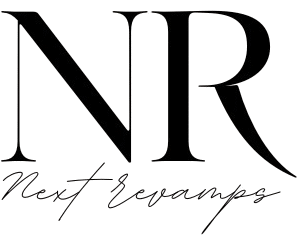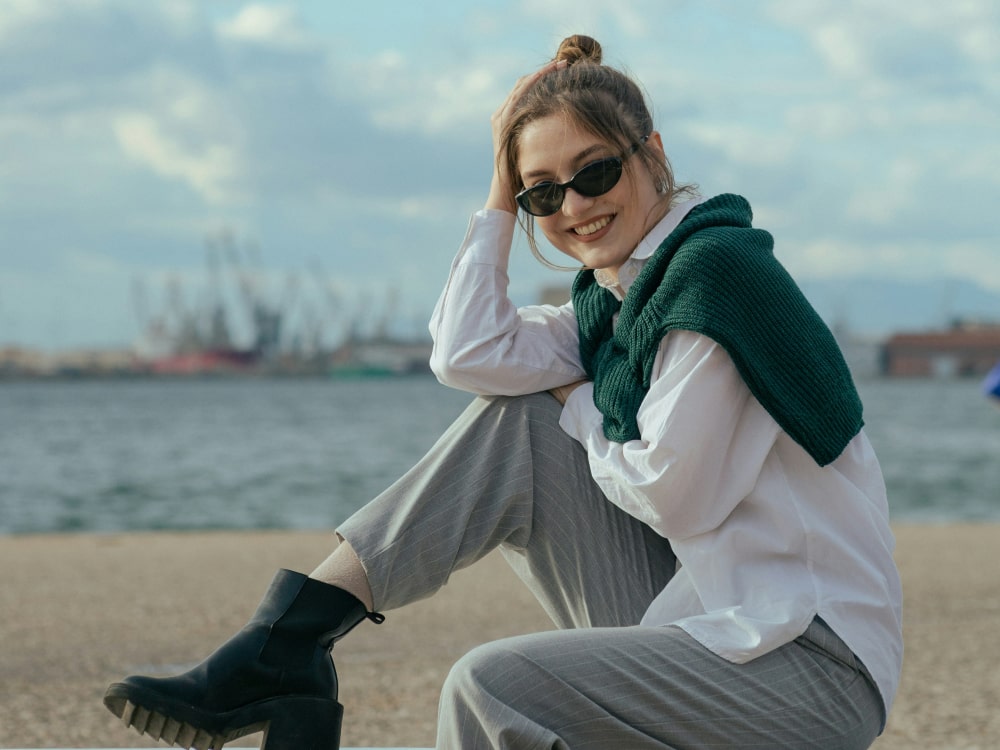If there’s one piece that has seamlessly transitioned from corporate corridors to chic café corners, it’s the blazertje. More than just a piece of suiting, this sartorial hero has earned its place as a foundational fashion layering piece in every modern wardrobe. But what exactly is it, and why has it become so indispensable?
A blazertje—a Dutch term of endearment for a small, stylish blazer—is the perfected, often more relaxed, version of its traditional counterpart. It’s the go-to versatile outerwear piece that can elevate a simple jeans-and-t-shirt combo into a look of intentional, chic blazer style. This article is your definitive guide to understanding, styling, and loving your blazertje.
1. Introduction: What is a Blazertje?
Pronounced blah-zer-tye, the word literally translates to “little blazer.” However, its impact is anything but small. A blazertje typically refers to a women’s blazer jacket that is less structured and rigid than a full suit blazer. It often features softer shoulders, a slightly cropped or boxy cut, and is made from a wider variety of fabrics, from crisp linen to cozy tweed.
Think of it as the friendly, more approachable sibling of the formal blazer. It’s designed for versatility, effortlessly bridging the gap between smart and casual. Whether you’re aiming for a powerful office look or a relaxed weekend outfit, the blazertje is your secret weapon.
2. History & Evolution of the Blazertje
The blazer’s origins are rooted in the 19th century, with the iconic “blazer” jacket born from the uniforms of British naval and rowing clubs. These jackets were bright and bold, designed for visibility and team spirit.
The evolution into the modern blazertje is a story of women’s liberation and changing fashion norms. As women entered the workforce in droves in the 1980s, the power shoulder and oversized silhouette became a symbol of authority. But as workplaces and styles relaxed, so did the blazer. Designers like Yves Saint Laurent and later, powerhouses like Giorgio Armani, began deconstructing it, removing padding and introducing softer fabrics.
This evolution culminated in the contemporary blazertje—a piece that retains the intelligent silhouette of a blazer but prioritizes comfort and personal expression. As noted by Vogue, the modern blazer is no longer just for suiting; it’s a “wardrobe workhorse” for expressing individual style.
3. Key Features of a Blazertje
So, how can you spot a true blazertje? Look for these defining characteristics:
-
Softer Shoulders: Unlike the sharp, padded shoulders of a traditional blazer, a blazertje often has natural or deconstructed shoulders, making it less formal and more wearable.
-
Relaxed Fit: It’s often slightly boxy or oversized, allowing for easy layering over sweaters and thicker tops. The fit is intentional, not sloppy.
-
Versatile Length: While often cropped, a blazertje can also come in hip-length or longer oversized blazer styles. The key is that the proportion feels modern and easy.
-
Unique Buttons & Details: From statement horn buttons to hidden closures, the details are often what give a blazertje its unique personality.
4. Different Types & Styles of Blazertje
The beauty of the blazertje lies in its diversity. Here are the key styles to know:
-
The Classic Tweed Blazertje: A timeless choice, often associated with Chanel, that adds a touch of textured sophistication to any outfit.
-
The Oversized Blazertje: The ultimate casual blazer outfit anchor. This style, championed by brands like Totême, is perfect for creating a relaxed, yet put-together look.
-
The Mini Blazer: A sharply cropped style that sits at the waist. It’s fantastic for high-waisted trousers and skirts, creating a defined, modern silhouette.
-
The Linen or Cotton Blazertje: Your warm-weather best friend. This breathable version is ideal for throwing over a summer dress or vest top.
-
The Colored or Printed Blazertje: Step away from navy and black. A blazertje in a bold color or subtle check is a fantastic way to make a statement.
5. How to Style a Blazertje (With Examples)
This is where the blazertje truly shines. Its versatility is unmatched.
-
The Effortlessly Chic: Pair an oversized blazer with straight-leg jeans, a simple white t-shirt, and sleek loafers. This is the quintessential casual blazer outfit.
-
Power Meeting Ready: Wear your classic blazertje with matching trousers for a modern suit look. Instead of a button-down, try a simple silk shell for a softer feel.
-
Feminine Edge: Drape a mini blazer over a floral midi dress. The contrast between the structured jacket and the flowy dress is pure magic.
-
Weekend Comfort: Throw a unisex-style blazertje over a hoodie, bike shorts, and trainers. This look, frequently spotted on street style stars, is the epitome of high-low dressing.
-
Evening Glam: Choose a sequined or velvet blazertje and wear it over a slip dress with heels. It’s a sophisticated alternative to a traditional evening cover-up.
6. Choosing the Right Blazertje for You
Finding your perfect blazertje depends on your body shape and personal style.
-
Petite Frames: Opt for a cropped mini blazer or a tailored style that hits at the hip to avoid being overwhelmed by fabric.
-
Tall Frames: You can carry an oversized blazer with ease. Look for longer lengths that complement your height.
-
Pear Shape: A blazertje that nips in at the waist and then flares slightly (a peplum style or one kept unbuttoned) can balance your silhouette beautifully.
-
Apple Shape: A longer, single-breasted blazertje worn open creates a clean, vertical line that is very flattering.
7. Fabric & Quality Considerations
Investing in quality fabric is investing in longevity. A good blazertje should feel substantial.
-
Wool & Tweed: Ideal for structure and cooler months. They are durable and hold their shape well.
-
Linen & Cotton: Perfect for breathability in summer, though they will wrinkle—a part of their charm.
-
Blends (e.g., Wool-Silk, Linen-Viscose): Often offer the best of both worlds, providing drape with less wrinkling.Synthetic Blends: Can be affordable and wrinkle-resistant, but check for breathability. A well-constructed blend from a quality brand can be a great option.
Always check the lining. A viscose or cupro lining allows the garment to move with you and makes it easier to put on and take off.
8. Care & Maintenance Tips
To ensure your blazertje remains a staple for years to come:
-
Steam, Don’t Iron: Ironing can create unwanted shine on fabrics like wool. Use a steamer to remove wrinkles gently.
-
Store Properly: Use a padded hanger that supports the shoulders to maintain the jacket’s shape.
-
Spot Clean: Address spills immediately with a damp cloth. For deeper cleans, follow the care label—many blazertjes are best handled by professional dry cleaning.
-
Refresh Between Wears: Let your blazertje air out between uses to maintain its freshness.
9. Trends & Future of the Blazertje
Looking ahead to blazertje trends 2025, the future is bright and expressive. Expect to see:
-
Sustainable Materials: As highlighted by Harper’s Bazaar, fashion’s push towards sustainability will bring more blazertjes made from recycled wool and innovative organic fabrics.
-
Hyper-Textured Fabrics: Think bouclé, faux fur, and heavy ribbed knits in blazer form.
-
Asymmetrical Cuts: Designers are playing with deconstruction, offering unique, one-shoulder, and wrap-style blazertjes.
-
Continued Dominance of Oversized Silhouettes: The relaxed, effortless vibe is here to stay, evolving with even more dramatic proportions.
10. FAQs About Blazertje
Q: What is the difference between a blazer and a blazertje?
A: A blazertje is generally less formal, softer in construction, and more focused on casual, versatile styling than a traditional structured suit blazer.
Q: Can a blazertje be worn in the summer?
A: Absolutely! A blazertje made from linen, cotton, or a light blend is a perfect layer for air-conditioned spaces or cooler summer evenings.
Q: How should a blazertje fit?
A: It should fit comfortably across the shoulders and back without pulling. The sleeves should hit just at or above your wrist bone. The overall fit can be tailored or intentionally relaxed, but it should never look too tight.
Q: Is a blazertje still appropriate for a formal office?
A: In a very formal setting, a traditional suit might be better. However, a well-tailored, classic-style blazertje in a dark color can absolutely be office-appropriate, especially when paired with matching trousers.
11. Conclusion
The blazertje has firmly cemented its status as a non-negotiable modern classic. It’s more than just a piece of clothing; it’s a tool for self-expression, a bridge between styles, and a testament to the fact that the best fashion is both intelligent and effortless. By understanding its history, varieties, and styling potential, you can unlock a world of sartorial possibilities. So, find the blazertje that speaks to you, and start creating your own iconic looks.








2 thoughts on “Master the Blazertje: The Ultimate Guide to This Fashion Staple”